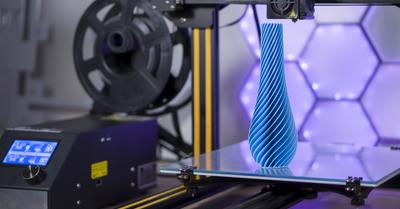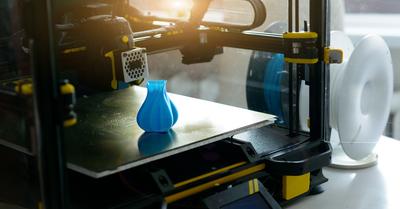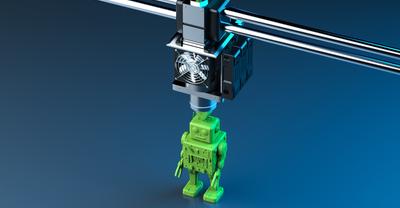Best Frosted PETG Tubing
Though acrylic tubing is the most common type used in custom water-cooled PCs, PETG is another great material to consider when building your PC. However, if you want more of a frosted look on your tubing, the options can be few and far between.
Frosted PETG tubing isn't commonly found on the market mainly because of the niche demand for such a specific aesthetic, which doesn't justify mass production for most manufacturers.
People often turn to acrylic tubing when they want a frosted finish because acrylic can be more readily manufactured with a frosted texture during the production process.
Moreover, acrylic tubing holds a frosted or satin finish better over time, whereas PETG might require maintenance to keep the frosted look due to its softer nature, which can be more prone to scratches and clouding.
PETG Vs. Acrylic: Advantages and Disadvantages
Though acrylic tubing is the most widely used in water-cooled PCs, PETG tubing has quickly become a great additional option in PC builds. So, does PETG have what it takes to pass up acrylic and become the new standard?
Most likely, the answer to this question is no, though not based on the merits of PETG tubes. For some reason, hardcore PC enthusiasts have begun to frown upon the use of PETG tubing, insisting that acrylic is superior and should continue to be the default tubing when it comes to PC water cooling.
However, despite all the drawbacks, PETG tubing offers almost identical performance and results when compared to acrylic tubing and can be useful, especially for beginners.
Even though both materials offer similar outcomes, the subtle differences between them could influence your decision on which tubing to select for your next PC build.
Acrylic has been the default tubing for such a long time for good reasons. Acrylic tubing offers unmatched clarity, looking much more similar to glass than PETG does.
Acrylic tubing is characterized by its impressive strength and rigidity, making it capable of withstanding significantly higher temperatures compared to PETG tubing. This feature becomes particularly important in scenarios where the coolant temperature might rise unexpectedly, such as during intense overclocking sessions or in the event of a pump failure, ensuring the integrity of the tubing under stress.
Acrylic tubing is also scratch and stain-resistant, unlike PETG, so you don’t have to worry about your acrylic tubing getting too beat up once it's in place.
However, Acrylic tubing’s superior rigidity and strength can be a bit of a downfall in some cases. With acrylic being so rigid, it is much more prone to shattering than PETG tubing is, which can be dangerous if you get too mad at your PC for losing a game.
The superior heat resistance of acrylic tubing, while good for the extreme temperatures inside your PC, can make it much more difficult to work with than PETG tubing. Because PETG’s melting point is much lower than acrylic’s, it is much easier to heat it and bend it into the right shape.
This is incredibly advantageous for anyone who’s making a new PC, but even more so for beginners who will have much more trouble heating the acrylic tubing to the necessary temperature to form it into the right shape.
Still, PETG users should be cautious once the computer is finished and in use. If the coolant gets too hot, usually around 40 degrees Celsius and above, your PETG tubing may begin to deform and bulge or, in extreme cases, even leak out coolant.
This can be detrimental to the aesthetics of the PC and possibly catastrophic to the PC itself.
It is worth noting, however, that there is a simple way to avoid this. These types of deformations tend to occur around the end of the tubing where the tubes meet the compression fittings, so putting any sort of PETG tubing insert, like the EK-HD PETG Inserts, on the ends of your tubing can prevent your PETG tubing from being exposed to the extreme heat needed to deform it.

One slight disadvantage that PETG tubing has compared to acrylic is its water permeation. Water permeation is the process by which water passes through a solid object, and acrylic tubing allows this to happen.
Though this superior ability to stop the permeation of water through the tubing is slightly advantageous, in reality, all it means is that you’ll have to top off your cooling loop just a little bit more frequently if you decide to use PETG tubing in place of acrylic.
Overall, despite their slight differences, you really can’t go wrong with either material. I would say that PETG is the better choice for beginners building their first PC; you won’t need to go out and buy special tools just to work with it.
Though it lacks some of the strength and resistance that comes with acrylic tubing, the affordability of PETG tubing, as well as the fact that it is much easier to heat, bend, and cut, makes it perfect for any first-time PC builder.
However, if you’re already an enthusiast with multiple PC builds under your belt, you may be better off using acrylic tubing. In the long term, acrylic tubing can’t be outmatched by PETG visually.
Though harder to work with and easier to shatter, acrylic tubing is the standard tubing for a reason, and anyone looking to have the best-looking and performing PC should stick with acrylic.
Why Choose A Frosted Finish Instead Of A Clear One?
In reality, the choice between frosted and clear tubing for your PC's cooling system is entirely aesthetic; both options function identically in terms of performance.
Whether you opt for the sleek transparency of clear tubing or the subtle elegance of frosted tubing, it won't impact your PC's efficiency.
Your decision should be based on your style preferences and the visual theme you envision for your PC build. Many people prefer their tubing to be clear, which works specifically well if you are using a dark-colored coolant. However, unlike darker colors, I don’t think light colors work as well here.
In my view, the major benefit of frosted tubing over clear is how it enhances the look of light-colored coolants. The textured surface of frosted tubing captures and diffuses light in a way that gives lighter, pastel-colored coolants a more pronounced presence within the build, making them a striking feature rather than a subtle detail.
This allows you to experiment with colors you might not otherwise use, like light blue, greens, and red. There’s nothing that can make your tubing look more like a freezing cold stream of icy water than using a sky-blue coolant with frosted tubing.
Frosted tubing also works a lot better with RGB light fillings. The frosted satin finish of the tubing strengthens the color and diffuses light much better than a clear tube would. This allows the tube to glow more fully along its entire length, an effect that is much more difficult to accomplish when using clear tubing.
Depending on what else you are using in your build, colored tubing may be a great option to use as well. Most colored tubes have a matte, frosted finish, which can complement colored acrylic panels in your PC build.
Using frosted tubes that match the color of other components can enhance your PC's overall look, giving it a distinctive style that sets it apart.
What Materials Do You Need, and How Do You Frost Your Own PETG Tubing?
Now for the fun part! This mod is incredibly simple to pull off, and all you’ll need are two simple items: your PETG tubing and a few 500 and 1000-grit soft pads.
For those of you unfamiliar with soft pads, they are simply sanding pads that are often used to polish soft surfaces like plastics and resins. Though usually used with a power sander, these soft pads can also be used by themselves to great effect. Those in the automotive industry should already be quite familiar with these types of sanding pads.
The advantage of using soft pads instead of something a bit more common, like sandpaper, is that soft pads are designed to conform to curved and uneven surfaces. It is still possible to use normal high grit sandpaper if you want to. However, edges and corners will be hard to get an even frosted finish on.
Basically, soft pads are the way to go because they help make an even finish on all parts of the tubing, not to mention that they will allow you to complete the job in a much quicker and more efficient manner.
These pads are widely available online or at any hardware store near you. However, the trick here is finding a small, appropriately sized package of pads that won’t leave you with a lifetime supply of soft pads left over.
Mirka Abralon soft pads are great for this as they come in convenient packages of ten. However, there are plenty of options to choose from, and with a worst-case scenario of simply having too many leftover soft pads, there isn’t any wrong choice of soft pads to use.
Once you’ve acquired your soft pads and PETG tubing, the process of frosting PETG tubes is quite simple. All you’ll want to do is begin sanding with the 500-grit soft pads.
Run the pads from end to end along the whole length of your PETG tubing. This should leave some consistent lines scratched along the entire length of the tubing.
Once finished with your long straight motions, try to even out the finish by doing circular motions along the tubing. This should leave you with a consistent and even frosted finish.
If you still notice some inconsistent marks from the 500-grit soft pads, you’ll want to break the 1000-grit pads out next. Sanding over any surface that has faint and inconsistent markings will smooth everything out, leaving you with the beautiful satin frosted finish you’ve been looking for.
Overall, this process should be quick and straightforward since the soft pads are designed to effectively and easily handle the PETG tubing. However, there is one very important thing that you need to take note of.
Make sure that you have already bent your tubing into the desired shape before you try to sand your PETG. The sanded layer that causes the tubing to have a frosted look is incredibly thin, so if you heat up your tubing to bend it, the effect will mostly disappear or, at the very least, be less visible throughout the area that was exposed to the heat.
Make sure to first heat and shape your tubing as usual, and then proceed to sand it down afterward.
What If You Don’t Want To Frost The Tubing Yourself?
Though the process of making your own frosted PETG tubing is simple, easy, and doesn’t require any expensive equipment, it is understandable if you still don’t want to do this yourself.
Some of you simply don’t want to expend the effort to do this yourselves and would much prefer to simply buy the finished product that you can use immediately. So, what if this is the case? Is there an easy way out?
As stated before, unfortunately, there are no suppliers that currently sell frosted PETG tubing; however, if you are up to the task and are confident in your ability to use acrylic tubing, you do have one option.
Alphacool’s Eisrohr Satin acrylic tubing is a great option for anyone looking to get that frosted look without doing all the hard work. It’s really easy to find online on sites like Amazon so that you can work with your new frosted tubing within a matter of days.
Just remember that because this is your only option, you are limited in the range of sizes that you can buy. Be sure to double-check that they have the correctly sized tubing for your build.
However, if you are still certain that you want to use PETG tubing instead of acrylic, you’ll just have to settle for normal clear PETG tubing. Though you won’t be able to get the frosted look you want without the extra work, clear PETG tubing is widely available and easy to find online, and you’ll still reap all of the benefits of using PETG tubing in place of acrylic in your build.









